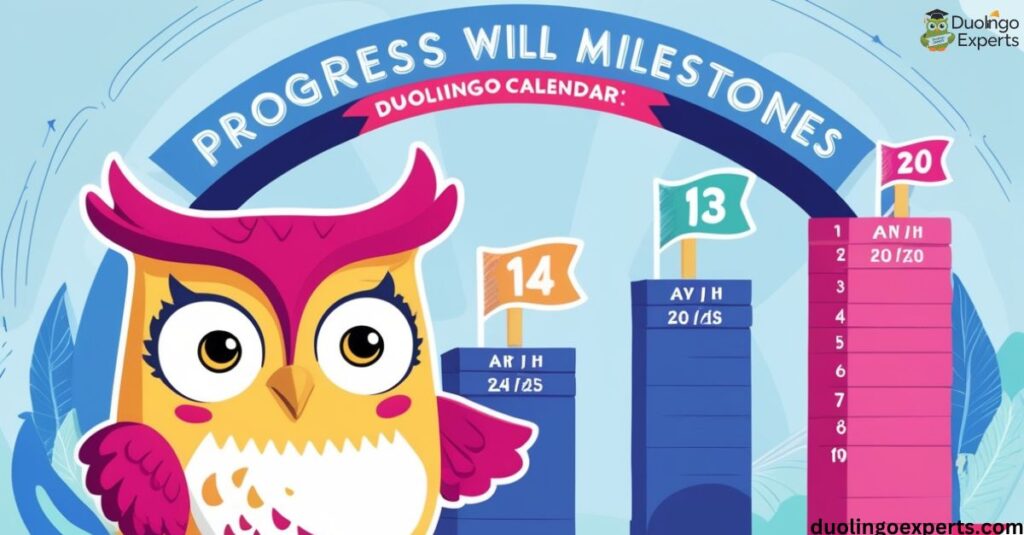Learning French is an exciting journey, but one that comes with questions: How long does it take to learn French on Duolingo? If you’re considering Duolingo as your tool of choice, you’re in great company. As one of the most popular language-learning apps, Duolingo offers an accessible, gamified way to learn new languages, and French is a favorite among learners.
But how long will it really take? Let’s explore a realistic timeline for learning French with Duolingo, based on user experiences, app structure, and effective learning strategies. Whether you’re a beginner or aiming for fluency, we’ll dive deep into the timeframes, language learning goals, and effective strategies to get you speaking French in no time.
Understanding Duolingo Language Structure
Before diving into how long it will take to learn French, it’s important to understand Duolingo’s unique learning system. Duolingo is designed to make language learning accessible, fun, and structured. It uses a gamified approach, turning language learning into an interactive game. Learners move through lessons, earn points (XP), and unlock new levels, creating a rewarding experience.
What’s Inside the Duolingo French Course?
The French course on Duolingo is divided into skills or units that focus on different areas of the language. Each unit typically covers a specific topic such as greetings, verbs, food, and family. These units are organized in a way that allows you to gradually progress from one concept to the next, building up your vocabulary, grammar, and overall understanding of the language.
Duolingo uses a tree structure for its lessons. As you advance, you’ll unlock more skills and challenges, progressing toward higher levels of proficiency. The app is designed to adapt to your progress, ensuring that you review words and phrases using its spaced repetition system. This system is scientifically proven to help retain vocabulary in long-term memory, which is a major asset in language learning.
The Role of Gamification in Duolingo’s Approach
Duolingo’s game-like experience is designed to keep learners motivated. You can earn points, level up, and even compete with friends. This gamification is one of the reasons why Duolingo is so successful. It turns language learning into a daily habit, and daily practice is one of the keys to successfully mastering a new language.
Daily Time Investment Requirements
So, how much time should you spend each day on Duolingo? The time commitment can significantly impact how quickly you progress. Here’s a breakdown based on your learning goals:
Casual Learners
For those of you learning French casually, 15-30 minutes a day is generally sufficient. This allows you to gradually build up vocabulary and improve your basic grammar skills without feeling overwhelmed. Duolingo’s flexible design means you can fit short lessons into your daily routine, even if you’re only studying in your spare time.
Serious Learners
If you’re committed to becoming fluent in French, it’s important to invest more time. 30-60 minutes a day will allow you to progress faster and reinforce what you’ve learned. Serious learners often engage with the app for longer periods, review lessons, and challenge themselves with additional features such as Duolingo Stories (which improve comprehension and speaking skills).
The key is consistency. Even if you only have a few minutes each day, sticking to a routine is much more effective than cramming several hours into a single session once in a while. The more frequently you interact with the language, the faster your skills will develop.
Time Efficiency and Flexibility
One of Duolingo’s main advantages is its flexibility. Whether you’re studying for 15 minutes on a bus ride or dedicating an hour in the evening, the app accommodates your schedule. If you’re aiming for fluency, higher daily study time will naturally accelerate your progress. But remember, it’s not just about the quantity of study time quality and consistency matter just as much.
Progress Milestones by Month

Setting realistic milestones is crucial for any language learner. By defining what you want to achieve each month, you can measure your progress and stay motivated. Here’s what a typical Duolingo learner might experience in their first year of French:
Month 1: A1 (Beginner) Level
In the first month, you’ll focus on building a foundation in French. This includes basic greetings, introductions, and simple sentence structures. By the end of month 1, you’ll be able to introduce yourself, ask for directions, and talk about simple everyday activities.
Key Skills You’ll Learn:
- Basic vocabulary (common words and phrases)
- Pronouns (I, you, he, she)
- Verb “être” (to be) and “avoir” (to have)
- Simple questions (What? Where? How?)
Month 2-3: A2 (Elementary) Level
During months 2-3, you’ll begin expanding your vocabulary and working on more complex sentences. By now, you should be able to understand basic conversations and respond to questions in simple ways. You will also start to grasp basic grammar concepts such as the present tense and regular verb conjugations.
Key Skills You’ll Learn:
- Verb conjugations (regular verbs like -er, -ir, and -re)
- Common phrases for shopping, traveling, and dining
- Expanding your vocabulary (food, travel, family)
Month 4-6: B1 (Intermediate) Level
Around month 4, you’ll transition into intermediate territory. At this point, you’ll be able to engage in basic conversations and write simple texts. You’ll dive deeper into verb tenses, especially the past tense (passé composé) and future tense (futur proche), and understand more complicated sentence structures.
Key Skills You’ll Learn:
- Past and future tenses
- Conversations about work, hobbies, and daily life
- Asking for and giving directions
- Describing events or actions in the past
Month 7-12: B2 (Upper Intermediate) Level
By month 7-12, you’ll be at a point where you can hold conversations about a wide range of topics, such as news, culture, and personal experiences. Your French fluency will improve significantly, and you’ll begin feeling more confident with complex grammar, including the subjunctive and conditional tenses.
Key Skills You’ll Learn:
- Complex sentence structures
- Expressing opinions and preferences
- Talking about past events in greater detail
- Understanding native speakers more easily, especially in slow or controlled conversations
Setting Clear Learning Goals
To make steady progress in learning French, setting clear learning goals is essential. The more specific your goals, the easier it is to measure your success. Here are some examples of goals you can set with Duolingo:
- Daily French Learning Goals: Aim to complete one lesson per day, learn 10 new words daily, or achieve a streak of 30 days.
- Monthly Learning Milestones: Aim to complete a certain number of lessons or unlock a specific number of skills. For example, “Complete 3 Duolingo trees in the next three months” or “Reach A2 proficiency by the end of month 3.”
- Vocabulary Goals: Set a goal to learn a set number of new words each week. Duolingo’s spaced repetition system will help you retain them effectively.
Having concrete goals makes it easier to stay on track and ensures that you stay focused. Track your progress using Duolingo’s streaks, XP points, and level advancements. Duolingo also provides a visual representation of your progress, helping you stay motivated and see how far you’ve come.
Duolingo Language Proficiency Levels and How They Map to Real-World Fluency

Duolingo uses a proficiency scale that aligns with the Common European Framework of Reference (CEFR), which is the global standard for measuring language proficiency. Here’s a breakdown of the CEFR levels and what you can expect to achieve at each stage:
A1 (Beginner)
At the A1 level, learners can understand and use familiar everyday expressions. They can introduce themselves and ask for simple information. Duolingo’s lessons at this stage focus on building basic vocabulary and introducing simple sentence structures.
A2 (Elementary)
By the time you reach A2, you’ll be able to understand sentences related to personal information, such as family, shopping, and work. You’ll be able to interact in simple situations and express yourself with some basic grammar structures.
B1 (Intermediate)
At B1, you can handle more complicated situations, such as talking about hobbies, emotions, and plans for the future. You’ll start using more advanced tenses and will be able to speak more confidently with others.
B2 (Upper Intermediate)
At the B2 level, learners can express themselves with a higher degree of fluency and spontaneity. They can understand the main ideas of complex texts, communicate with native speakers without strain, and handle most travel situations comfortably.
Realistic Time to Achieve Each Level
When you set out to learn French on Duolingo, it’s helpful to have a rough idea of how long it will take to reach each proficiency stage. Based on user feedback and language learning data, here’s an estimate of how long it might take to reach various DuolingoFrench milestones.
| Proficiency Level | Time to Achieve (with 20-30 minutes per day) |
|---|---|
| A1 (Beginner) | 1-2 months |
| A2 (Elementary) | 3-6 months |
| B1 (Intermediate) | 6-9 months |
| B2 (Upper Intermediate) | 9-12 months |
This is a general estimate, and the time it takes to progress through each level may vary depending on your study habits, the amount of language practice you do outside of Duolingo, and your previous experience with French or other languages.
Factors That Speed Up Your French Learning on Duolingo
While Duolingo is a powerful tool for learning French, there are several ways you can speed up the process. Let’s take a look at some of the key factors that can help accelerate your progress.
Consistency
The most important factor in learning French is consistent practice. Duolingo’s streak system motivates learners to practice every day, even if it’s just for 10-15 minutes. Consistency is what leads to steady improvements in vocabulary, grammar, and pronunciation.
Active Practice Outside Duolingo
Duolingo alone can’t make you fluent it’s essential to practice outside of the app. Listening to French podcasts, watching French films, and reading French books will help reinforce what you’ve learned. Additionally, practicing with native speakers through language exchange platforms or conversation groups can dramatically improve your speaking and listening skills.
Using Duolingo’s Features
Take advantage of all that Duolingo has to offer. Use Duolingo Stories to practice listening comprehension, or explore the Duolingo forums to interact with other learners and get advice. Repetition is key, so review lessons regularly to ensure you’re retaining the material.
Duolingo Success Stories: Real User Experiences

Many learners have successfully learned French on Duolingo. Here are a few success stories to inspire you:
- Sophie: After six months of daily practice, Sophie reached the B1 level and was able to travel to Paris and hold basic conversations with locals.
- Marcus: Marcus, who had no prior knowledge of French, used Duolingo for just 20 minutes a day for three months. By the end of that time, he was able to engage in simple conversations and understand basic French texts.
Common Challenges and Solutions
Learning a new language can come with challenges. Let’s address some of the common hurdles that learners face on Duolingo and how to overcome them.
Pronunciation Problems
French pronunciation can be tricky, especially with nasal vowels and silent letters. To improve, use Duolingo’s speaking feature regularly and listen to native speakers. French podcasts and YouTube channels can also help reinforce the correct pronunciation.
Stagnation
At times, learners may feel like they’re
not progressing. If this happens, try revisiting previous lessons or exploring a different learning method (e.g., reading French texts, listening to podcasts, or using language exchange apps). Getting outside of the Duolingo structure can sometimes help you see progress more clearly.
Motivation Dips
Staying motivated over the long term can be challenging. One way to combat this is by setting small, achievable goals. Additionally, celebrating milestones, such as completing a skill tree or finishing your first Duolingo story, can boost your motivation.
Practice Strategies for Faster Progress
To speed up your learning, here are some additional strategies:
Spaced Repetition
Duolingo’s spaced repetition system ensures you’re revisiting words and phrases at optimal intervals. Take advantage of this system by doing review sessions every few days to reinforce your knowledge.
Engage with Native Speakers
Engage with native French speakers through language exchange apps or conversation groups. The real-world practice will help you get used to the natural flow of the language and improve your speaking and listening skills.
Immerse Yourself in French
Try to immerse yourself in French as much as possible. Watch French media (TV shows, movies, or YouTube videos), listen to French podcasts, and even change your phone’s language settings to French. The more you expose yourself to the language, the faster you’ll adapt.
How Many Sections in Duolingo French Course?
Duolingo’s French course consists of multiple sections or skills. These include:
- Basics: Introduction to basic vocabulary and phrases.
- Food: Learn the names of foods and how to order in restaurants.
- Verbs: Focus on verb conjugations, especially regular verbs.
- Family: Learn vocabulary related to family members and relationships.
- Travel: Phrases and vocabulary for navigating transportation, directions, and more.
Each of these sections is designed to guide learners through different aspects of French language and culture.
Frequently Asked Questions
How long does it take to finish Duolingo French?
The time it takes to finish Duolingo French varies, but with consistent practice, it typically takes 6 months to a year. However, completing the course doesn’t guarantee fluency, as ongoing practice and immersion are key to mastering the language.
How long does it take to learn French on Duolingo?
It usually takes 3 to 6 months to reach an A2 level in French on Duolingo with consistent daily practice. To achieve B1 fluency, it can take around 6 to 12 months, depending on your dedication and extra practice outside the app.
Can you become fluent with Duolingo French?
While Duolingo can help you reach a solid intermediate level, becoming truly fluent in French requires additional practice with native speakers, immersive experiences, and exposure to real-world language use. Duolingo provides a great foundation, but consistency and supplementary resources are key to fluency.
Can you learn proper French with Duolingo?
Yes, Duolingo teaches proper French by focusing on vocabulary, grammar, and pronunciation. However, for advanced mastery, combining it with real-world practice and supplementary resources is essential.
How far can I get with Duolingo French?
With Duolingo French, you can reach an intermediate (B1) level, mastering basic conversation and grammar. To progress to advanced fluency, it’s important to supplement with real-world practice and additional resources.
How long should I do Duolingo a day?
Aim for at least 20-30 minutes a day on Duolingo to make steady progress. Consistency is key, so practicing daily is more effective than longer sessions less frequently.
How quickly can you become fluent in French?
Becoming fluent in French typically takes 1-2 years of consistent study and practice, depending on your dedication and immersion. Regular practice with native speakers and exposure to real-world language will speed up the process.
How long does 1 Duolingo course take?
Completing one Duolingo French course typically takes around 3 to 6 months with consistent daily practice. However, finishing the course doesn’t guarantee fluency, as ongoing practice is necessary for mastery.
Is it possible to learn French in 6 months?
It’s possible to reach an A2 level of French in 6 months with consistent daily practice on Duolingo. Achieving fluency in such a short time, however, requires additional real-world practice and immersion.
How much XP on Duolingo to be fluent?
There isn’t a specific XP target for fluency on Duolingo, as fluency depends more on consistent practice and real-world usage. However, reaching around 10,000-20,000 XP can signal significant progress toward an intermediate level.
Conclusion
So, how long does it take to learn French on Duolingo? In general, if you dedicate 20-30 minutes per day, you can expect to reach A2 proficiency in about 3 months, B1 in 6-9 months, and B2 in about a year. However, the timeline can vary based on your learning pace, consistency, and the amount of extra practice you incorporate.
By setting realistic goals, sticking to a daily routine, and using a combination of Duolingo and supplementary resources, you can achieve French fluency in less time than you might think. Now it’s time to start your journey and make language learning part of your daily life. Bon voyage!
>>>Read Also: What Are Gems For in Duolingo: Complete Usage Guide

DuolingoExperts, managed by MarkJohan, offers expert insights and tips for mastering languages. A tech-driven platform to enhance your learning experience.

